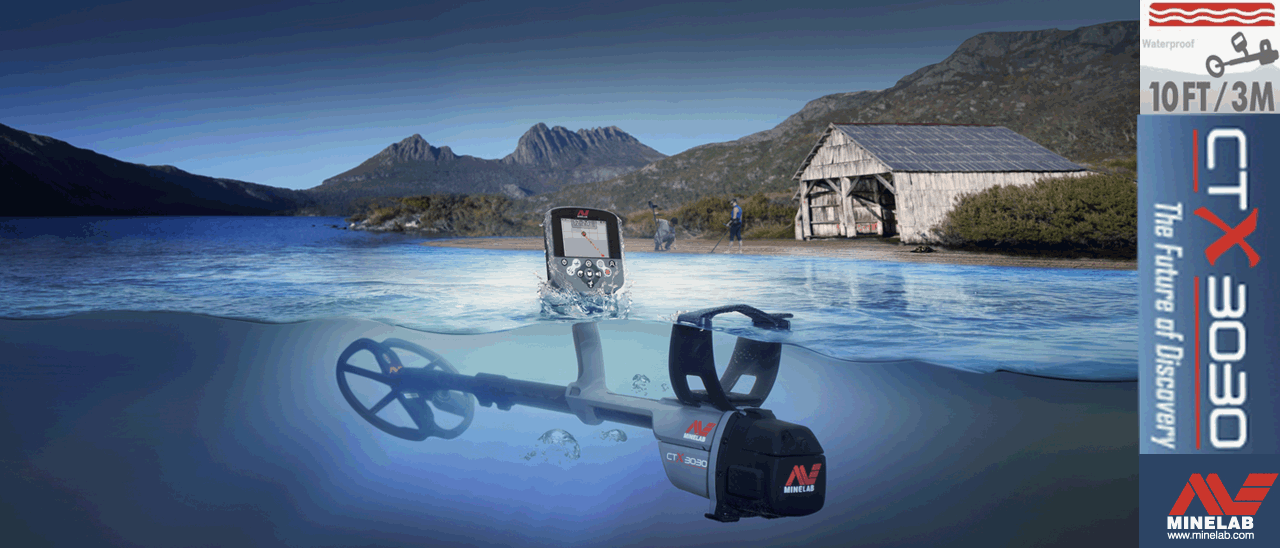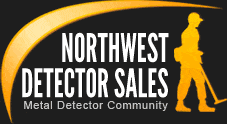
Minelab Equinox 800 VS CTX 3030
When people comment about the Minelab Gold Monster vs. the GPZ 7000, there is no argument whatsoever as to which detector would prevail gold nugget detecting in dense mineralized dirt.
However, if we look at the Minelab Equinox 800 vs. the CTX 3030, the comparison is not so clear. Both the CTX and the Equinox are superior detectors in the coin and relic hunting world, so what's the difference, and why is one machine $1000-1500 more?
We could look at these detectors in terms of strengths and weaknesses. However, detectors don’t really have weaknesses, they only have tools built into them to make them more efficient. A gold nugget detector like the GPZ 7000 has better tools built into it to handle heavy iron mineralization, whereas a VLF detector like the Equinox 800 has better tools built into it to help you find coins and relics.
There are no weaknesses in metal detectors, (perhaps disadvantages), some just lack the tools to deal with certain detecting conditions where others shine. Just because a car has four wheels and a motorcycle only has two you don't call that a weakness, because motorcycles can handle certain conditions and do things that cars cannot.

So let’s take a look at the tools these detectors have to offer us.
The CTX 3030 is the swiss army knife of detectors. There are so many tools/options to choose from it can be overwhelming. In all honesty, I made the mistake of getting one after only 6 years of detecting. I was one of those impatient people who just wanted the next best thing, and I didn’t respect or learn the tools I had.
The software on the CTX makes it unparalleled in Target Identification (TID), or does it?... If we are referring to the numbers that appear on the LED screen that correspond to the targets conductivity, then yes, the CTX is unparalleled in accuracy. However, a good detectorist should never rely on just a single tool like target ID to get by.
The CTX has a unique graph design which allows the user to discriminate between the CO (conductive), and FE (Ferrous) nature of the target. By introducing a graph, Minelab created another important tool for detectorists to be able to better identify their targets.
A target under the coil will appear as a crosshair on the graph screen, and an additional target will add yet another crosshair. The ability to see multiple targets under the coil visually is an excellent tool to help with target separation.
To layer that, Minelab created a tool they named Target Trace. Target Trace will turn the crosshair representing a target into an animated color blob on the screen. The strength of the signal will correspond to the color of the blob, yellow or orange being weaker, and red being strongest.
The Target Trace blob begins to smear across the screen if the target under the coil is more ferrous in nature. You can imagine that if multiple targets are on the screen, you would be able to easily see which one was more circular and whole, vs. which ones were smeared.
Adding even more information, Minelab created a Target Trace Pinpoint feature in which the target color information stays on the screen when the user is in pinpoint mode. This allows the user to take a layered approach with multiple sweeps across the target to see whether the Target Trace builds up in one condensed area (being a conductive good target), or if it ends up chaotically smearing across the screen (being ferrous unwanted target).
The tone options of the CTX 3030 add to the tool-kit. CTX tones have modulated volume, they can be short, long, or continuous, and they can have different pitches. You can hunt in tones ferrous or conductive, which will report the tones depending on their FE or CO reading. Finally, you can hunt in anywhere from 1 to 50 tones, and you can even hunt in a combined tones mode which combines both FE and CO readings.
Overwhelmed yet? Don’t be, these are all just tools. The more you examine the efficiency of your tools in different hunting conditions, the more information you’ll gather about what is under your coil.

The Equinox 800 is nowhere near as complex as the CTX 3030. It is very easy to pick up and learn. That said, to become more adept with the Equinox at discriminating what’s under the coil, you will need to understand all it has to offer, and learn the nuances of it’s tones, which are more subtle than other machines I’ve used.
To begin, the CTX is a multi-frequency machine, while the Equinox 800 can be both multi-frequency with an additional range of 6 different single frequencies to choose from: 4, 5, 10, 15, 20, and 40kHz. Like the CTX 3030, the Equinox has different modes to choose from, each one customized to suit a different detecting environment, including a gold mode (which the CTX does not have). Each mode allows you to hunt in either multi or single frequency.
The various modes of the Equinox 800 are set up so that each mode has two unique versions, each suited to specific ground types or hunting conditions. See below:

The secret sauce to the Equinox 800 is cross-checking between multi and single frequency. It reveals an enormous amount of information about the target under your coil and can be done with a quick click of a button.
For instance, I can identify an enormous amount of foil and iron targets with the cross-check method. Just think for a moment how important that is in terms of metal detecting for gold rings and jewelry!
So, at first glance it seems like the Equinox doesn’t have the visual target ID accuracy at depth like the CTX has, however that is not a skillful way of looking at it. The Equinox target ID is real constructive information the machine is giving you, the detector isn't lying to you. It's your job to see the patterns in that information that arise as you begin to learn the detector. Once you learn the patterns you will dig way way less trash and have a much more accurate understanding of what's under your coil.
Let’s talk about speed. The Equinox 800 has 8 levels of recovery speed. Recovery speed can be seen as how fast the detector is processing the signals under your coil. The slower the recovery speed, the more power the detector can use to detect deeper signals, the trade-off being that you have to slow your sweep speed down. Slow recovery speed is also more likely to blend signals, so it has less target separation capabilities.
A faster recovery speed can be used for trashy parks and areas where targets are close together. Using faster recovery speed results in a shorter signal and quicker signal processing power, so you can better discriminate between targets, but you will lose some depth depending on how high you set it.
At first glance, the CTX 3030 has only two levels of recovery speed: Fast and Deep. However, the CTX has much more when you look into the modes it has to offer: Coins, Beach, Relic, Silver, High Trash, and five more customizable modes.
Each of these modes is set with a specific discrimination pattern to help the suit detector better to the hunting environment.
To add to this, there are more CTX target separation features: Low Trash, High Trash, Ferrous Coin, Ground Coin. Each of these options offers unique algorithms to help the detector better discriminate in trash, iron, or mineralized soil.
For instance, High Trash setting will actually bring out accepted weak signals to be stronger, even if the signals that have been rejected or discriminated out are stronger. Think about how important that is when you’re trying to sort through large trash targets in a park and hear a small, deep, good signal!

As we pointed out earlier with the target trace feature, the CTX also has the ability to see two or more targets on the graph screen at the same time with color discrimination! There are some Equinox 800 users who can hear two targets under the coil, because the Equinox is so incredibly fast, however to be able to hear and see two targets like the CTX 3030 adds another layer of information that will help you find masked targets.
Finally, The CTX 3030 has the ability to customize the responses of your tones. Tone response settings include:
Normal- A short response.
Long- A continuous audio response.
Smooth- Similar to long but with pitch and smoother audio.
Pitch Hold- The tone emitted is the strongest when another target is detected, there is no rise and fall of tone.
Circling back to the Equinox 800, there just aren’t as many options as you have with the CTX. However, that is not a bad thing. Simpler can be better in some scenarios.. There is no doubt that the Equinox 800 is a faster machine than the CTX 3030, however, that could also mean that it won’t go as deep in some instances.
The Equinox 800 has incredible capability in handling heavy mineralization and identifying iron. In fact, Minelab came out with an Iron Bias discrimination feature on the Equinox which allows you to better reveal whether an iffy target is iron or not. However, using the iron bias features comes at a cost -- loss of depth.
I do not want to declare the iron bias features obsolete, however, I have found no situation in which I need them. The Equinox 800 is so good at identifying iron and separating targets, that if you simply circle your target while sweeping over it, the target will reveal whether it is ferrous or non-ferrous. Furthermore, as mentioned before, toggling between single and multi-frequency will help you reveal 99% of most bottle caps, iron, and other trash. To better understand this method READ HERE.
Using the Equinox 800 one can also adjust tone breaks, tone pitch, and tone volume, although not as much as you can on the CTX. These features help when you are searching in heavy trash or iron.
For instance, you can turn your iron volume down enough so it’s not distracting, but you can still hear it so you can tell if there are intermittent iron signals interrupting a good signal, hinting that the target is ferrous and you should continue to circle and listen for signal degradation.
So to reiterate, the CTX 3030 has some incredible tools at its disposal, it's a very deep and powerful machine, yet the Equinox 800, perhaps being slightly less deep in certain hunting conditions, can unmask targets just as easily, and simply, with its own tool-set.
Is one machine better than the other? Try to abandon that thought, and instead put the time into learning both machines, their advantages and disadvantages, and using the tools they have to offer in the most skillful ways to better help you in your unique detecting sites.

